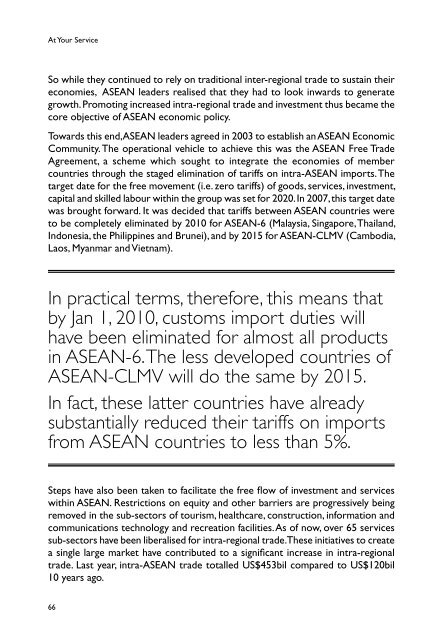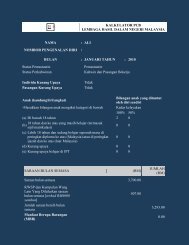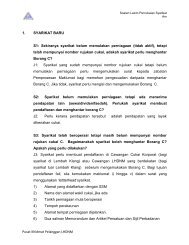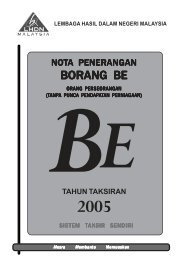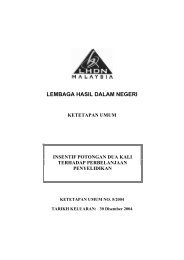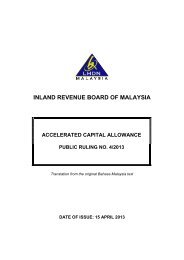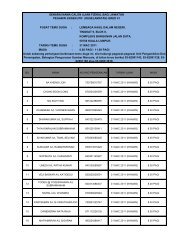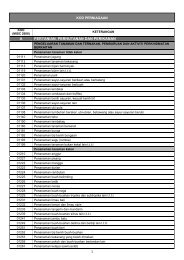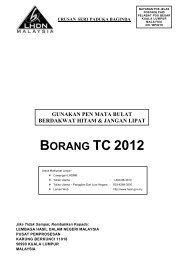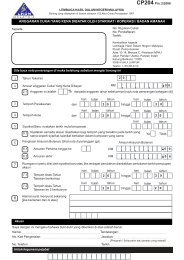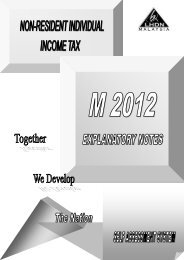Tan Sri Mohd Sidek Hassan
Tan Sri Mohd Sidek Hassan
Tan Sri Mohd Sidek Hassan
- No tags were found...
You also want an ePaper? Increase the reach of your titles
YUMPU automatically turns print PDFs into web optimized ePapers that Google loves.
At Your ServiceSo while they continued to rely on traditional inter-regional trade to sustain theireconomies, Asean leaders realised that they had to look inwards to generategrowth. Promoting increased intra-regional trade and investment thus became thecore objective of Asean economic policy.Towards this end, Asean leaders agreed in 2003 to establish an Asean EconomicCommunity. The operational vehicle to achieve this was the Asean Free TradeAgreement, a scheme which sought to integrate the economies of membercountries through the staged elimination of tariffs on intra-Asean imports. Thetarget date for the free movement (i.e. zero tariffs) of goods, services, investment,capital and skilled labour within the group was set for 2020. In 2007, this target datewas brought forward. It was decided that tariffs between Asean countries wereto be completely eliminated by 2010 for Asean-6 (Malaysia, Singapore, Thailand,Indonesia, the Philippines and Brunei), and by 2015 for Asean-CLMV (Cambodia,Laos, Myanmar and Vietnam).In practical terms, therefore, this means thatby Jan 1, 2010, customs import duties willhave been eliminated for almost all productsin Asean-6. The less developed countries ofAsean-CLMV will do the same by 2015.In fact, these latter countries have alreadysubstantially reduced their tariffs on importsfrom Asean countries to less than 5%.Steps have also been taken to facilitate the free flow of investment and serviceswithin Asean. Restrictions on equity and other barriers are progressively beingremoved in the sub-sectors of tourism, healthcare, construction, information andcommunications technology and recreation facilities. As of now, over 65 servicessub-sectors have been liberalised for intra-regional trade. These initiatives to createa single large market have contributed to a significant increase in intra-regionaltrade. Last year, intra-Asean trade totalled US$453bil compared to US$120bil10 years ago.66


